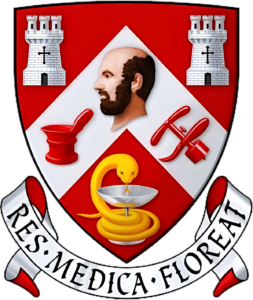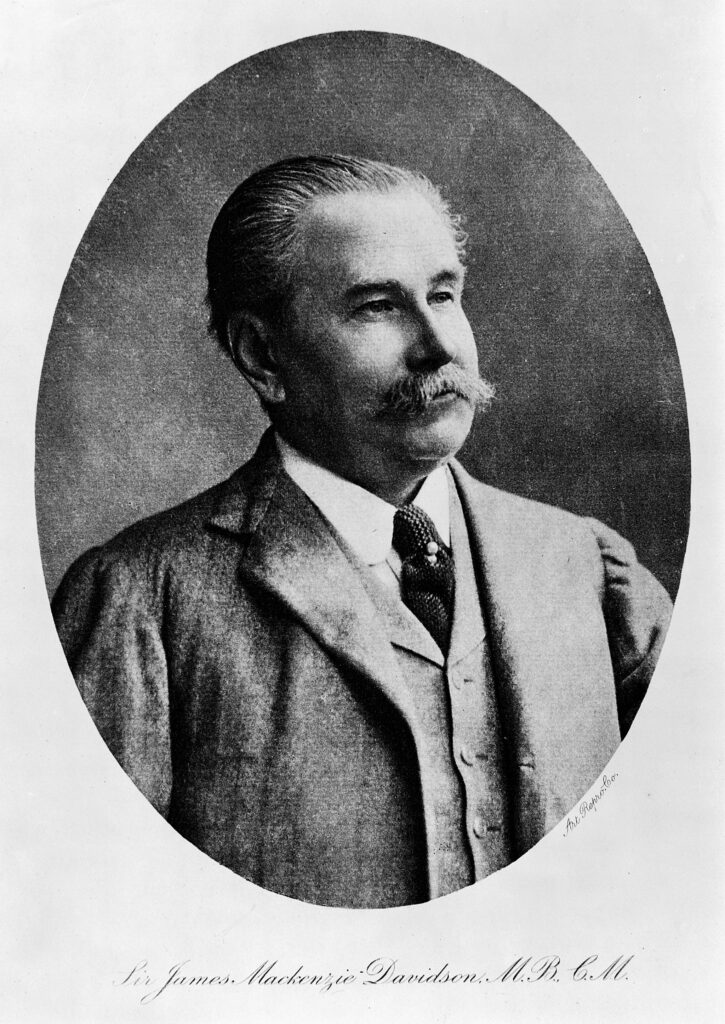 Born in 1856 in Santo Domingo Monastery, Quilmes, Argentina, where his father was a cattle rancher, his education began at the Buenos Aires Scottish School followed by medical studies in Edinburgh, London and Aberdeen, graduating MB CM from Aberdeen in 1882. On graduation, along with another young medic, Davidson set up an eye clinic in the east end of the city. He worked as physician to the Blind Asylum, Ophthalmic Surgeon to Aberdeen Royal Infirmary and The Royal Hospital for Sick Childre, promoting the new ‘aseptic’ method. He was a popular teacher among the medical students, inspiring many to excel at the same specialty. He beame Assistant to Sir Alexander Ogston, surgeon, under whom he developed his surgical and teaching skills.
Born in 1856 in Santo Domingo Monastery, Quilmes, Argentina, where his father was a cattle rancher, his education began at the Buenos Aires Scottish School followed by medical studies in Edinburgh, London and Aberdeen, graduating MB CM from Aberdeen in 1882. On graduation, along with another young medic, Davidson set up an eye clinic in the east end of the city. He worked as physician to the Blind Asylum, Ophthalmic Surgeon to Aberdeen Royal Infirmary and The Royal Hospital for Sick Childre, promoting the new ‘aseptic’ method. He was a popular teacher among the medical students, inspiring many to excel at the same specialty. He beame Assistant to Sir Alexander Ogston, surgeon, under whom he developed his surgical and teaching skills.
In 1896, MacKenzie Davidson, realising the importance of Roentgen’s original work on X-rays, visited him at his home in Wuerzburg, Germany. On his return he managed to access a 10-inch coil and two Crookes tubes with which to experiment. He produced some of the first X-rays in Scotland (Skiagraphs as they were originally known).
In 1897, he was appointed consulting surgeon to the x-ray department in Charing Cross Hospital, London. In London, he continued to develop the new diagnostic methodology in a variety of ways including inventing a new commonly-used Mercury break known as the MacKenzie Davidson Break. In 1898, he presented a “cross-thread localiser” to the Rontgen Society as well as developing the X-ray couch, to which it could be attached. This made it possible through a series of Skiagraphs to image a foreign body three-dimensionally allowing the surgeon to accurately remove small/hidden objects, particularly useful in his own area of interest, the eye.
In 1916, he was appointed honorary consulting Radiologist to the district of London’s military hospitals. He was also consulting radiologist to the X-ray department of the Royal London Ophthalmic Hospital, Moorfields Eye Hospital and Charing Cross Hospital.
MacKenzie Davidson was also one of the earliest workers with Radium, noticing its effectiveness in a number of disorders including X-ray dermatitis! He endured several operations on his hands and his eventual death from Heart Failure may have been as a result of the long-term effects of exposure to radiation.
As with many medical advances the Second Boer War and World War I led to the rapid adoption of new technologies including X-rays. The localizer, which could locate shrapnel and foreign bodies, became standard field equipment during the Boer War.
A frequent contributor to both medical and scientific journals, of papers, all of which indicated distinct advances in both technique and diagnosis. In July 1897, he published a radiograph of a bladder stone in the Archives of the Rontgen Ray, indicating at this early date the importance of the X-ray diagnosis of urinary calculi. An article on “Stereoscopic Radiography” is a record of a demonstration before the Section of Electrotherapeutics. His book on “X-rays and Stereoscopy ” was eagerly read by radiologists throughout the world.
Alongside his medical career, James MacKenzie Davidson was a passionate and able public educator in physical sciences such as optics and electricity. He devised both experiments and apparatus which he used in “lavish displays”, according to the British Medical Journal, which were greatly appreciated by the general public. His many interests also included photography and motoring.
In the tributes made after his death many refer to his generosity with his time and knowledge especially with his x-ray work, his originality and his enthusiastic advocacy for the future of medicine. The Röntgen Society of London, which became The British Society of Radiology, still, holds a yearly lecture called The Mackenzie Davidson Memorial Lecture, the first being given in April, 1920 by the Right Honourable Lord Rutherford, OM who stated “It is to the enthusiasm and devotion of men like Mackenzie Davidson and his colleagues that we owe the great advances that have been made in radiology and the steadily increasing recognition of its importance in medicine.”
Knighted in 1912;
President of the Rontgen Society of London 1912-1913;
President of the Radiology section of the International Congress of Medicine in London in 1913;
President of the British Institute of Radiology 1917-19;
Honorary member of the American Roentgen Society.
see: University of Aberdeen Special Collections
BMJ Obituary
image: Wellcome Collection: 1587988 Attribution 4.0 International (CC BY 4.0)
Biography prepared from the nomination made to the University of Aberdeen 525 Alumni project.


